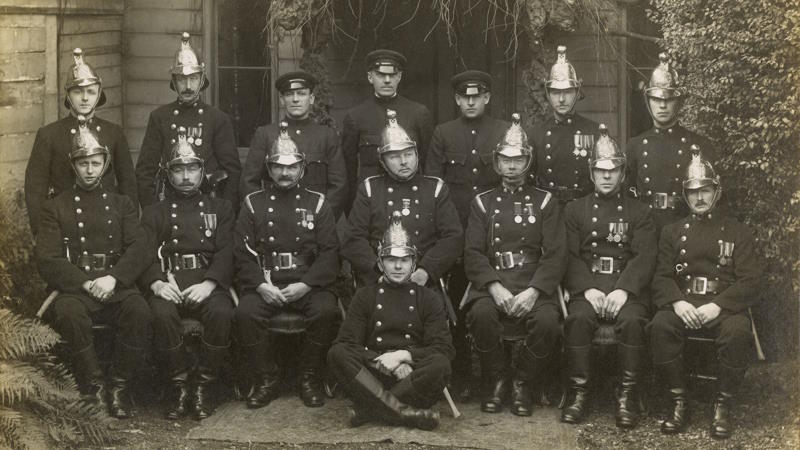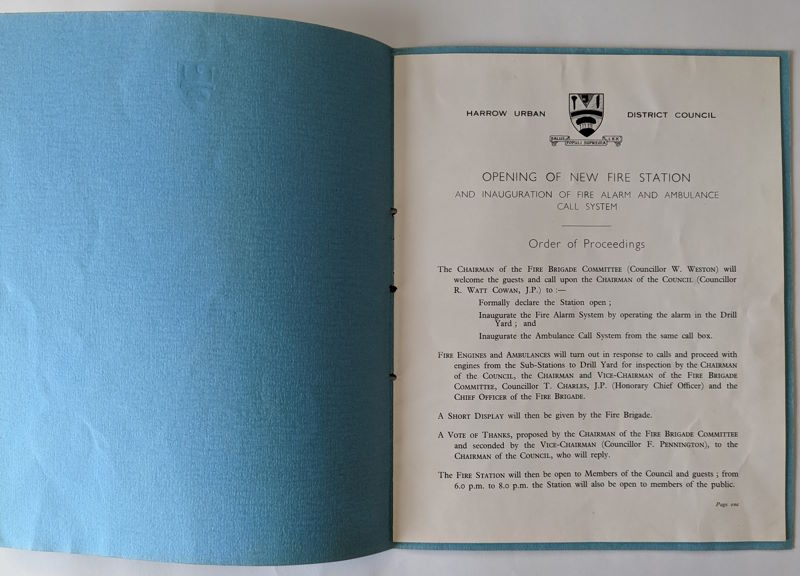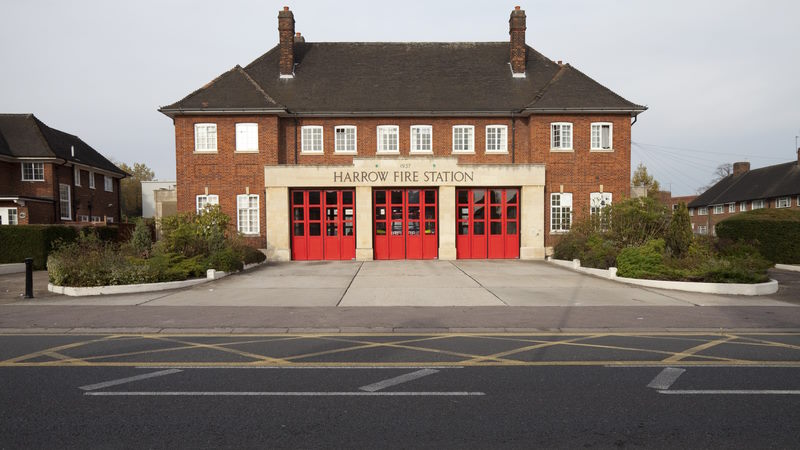
The first fire station in Harrow was built in 1877 at the Southern end of High Street. The building housed two manual pump fire engines owned by the Harrow Local Board of Health.
The original station was extended in 1889, followed by an increase in staff which brought the total strength of the brigade to 21 firefighters. The station was then rebuilt in 1914.

The current fire station building on Pinner Road was opened March 5 1938 and replaced the old station on the High Street. It could house three fire engines and included a 64 foot tower, which was originally used for drill practice, and was also heated to dry out lengths of fire hose.

The image above shows a booklet from 1938 produced by the Harrow Urban District Council. The title on the first page reads 'Opening of a new fire station and inauguration of fire alarm and ambulance call system'. It goes on to outline the order of proceedings which includes the fire station officially being declared open, a short display given by the firefighters, and a vote of thanks.
It became a very important divisional headquarters for the National Fire Service (NFS), set up during the Second World War. Harrow Fire Station was situated in Zone G of the London region for the NFS and was the Headquarters for J Division with 25 other sub stations under its control across Harrow and Edgware.
After the war Harrow Fire Station became part of Middlesex Fire Brigade, before becoming part of London Fire Brigade in 1965, with the creation of the Greater London Council.
One of the worst incidents Harrow Fire Station has attended was the Harrow and Wealdstone Rail Crash. Firefighters from this station were among the first rescuers at the scene of the accident in which three busy locomotives had collided on the morning of 8 October 1952.
The incident sadly resulted in the loss of 112 lives and remains the worst peace-time rail crash in the United Kingdom.

The station is crewed by a Sub Officer, a Leading Firefighter and five Firefighters who respond to a variety of incidents including fires, flooding and road traffic collisions. It houses a pump ladder fire engine, a hose laying lorry and a bulk foam unit. Foam is used to smother a fire involving oils, where water just isn’t safe or effective.